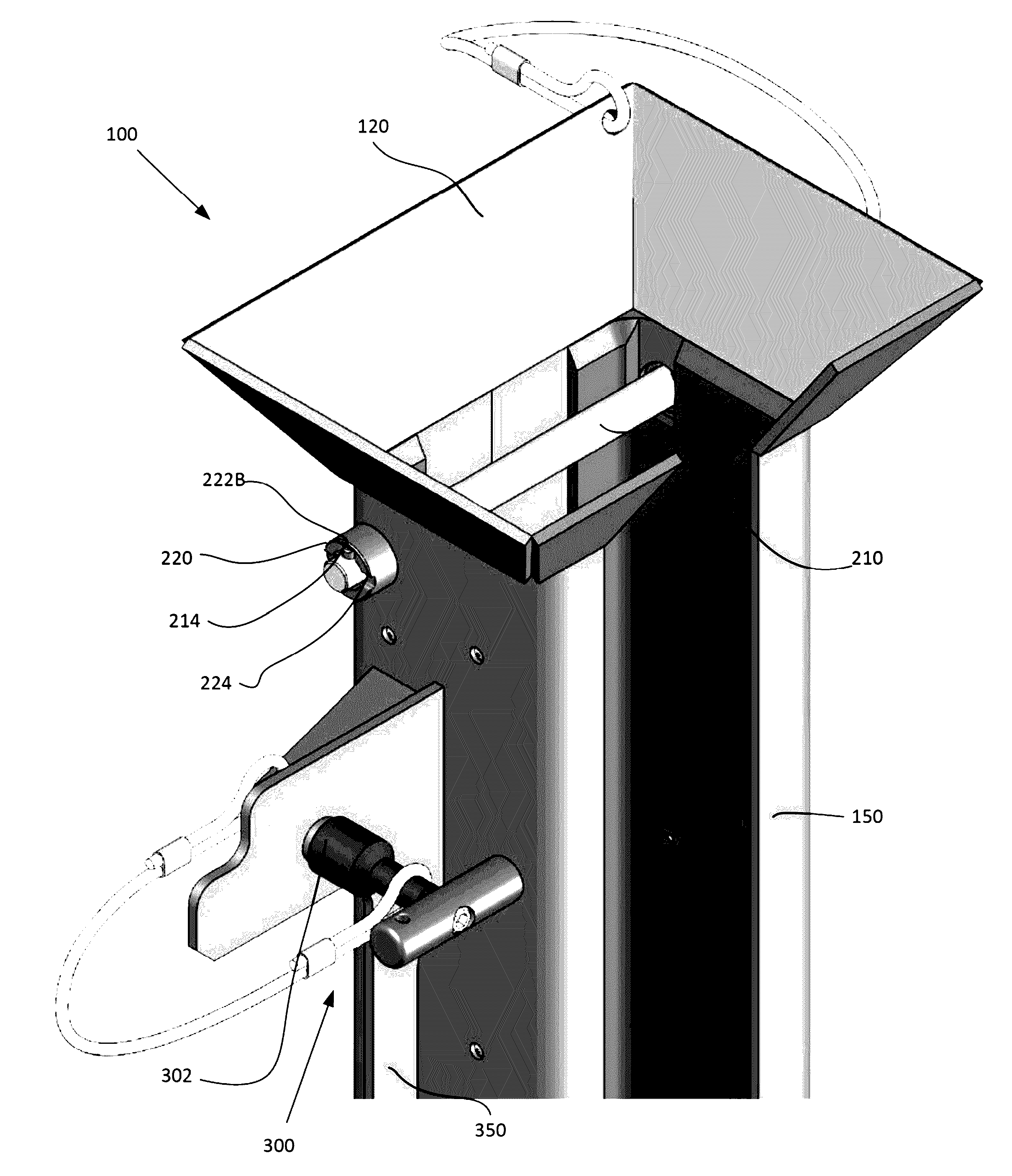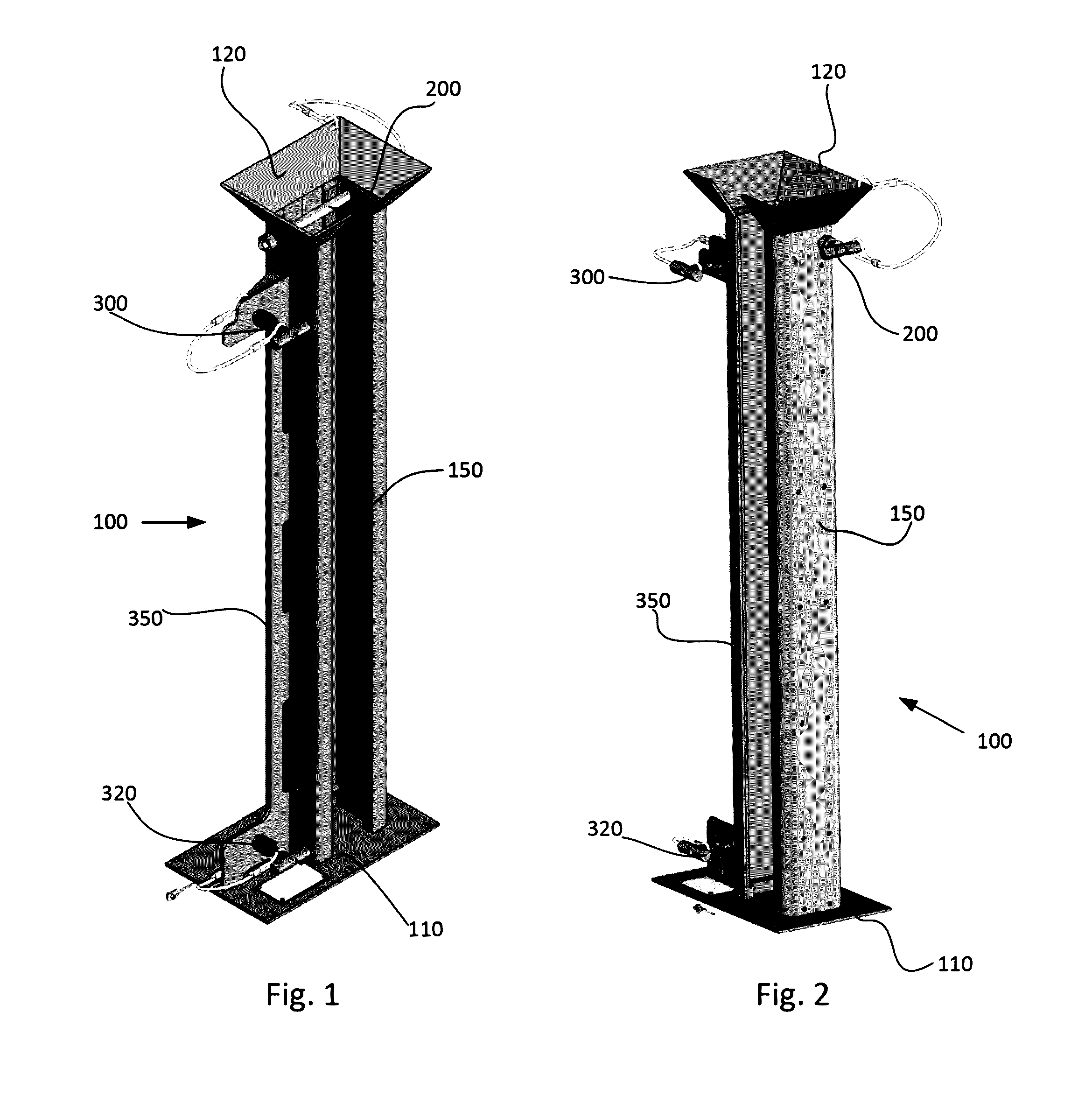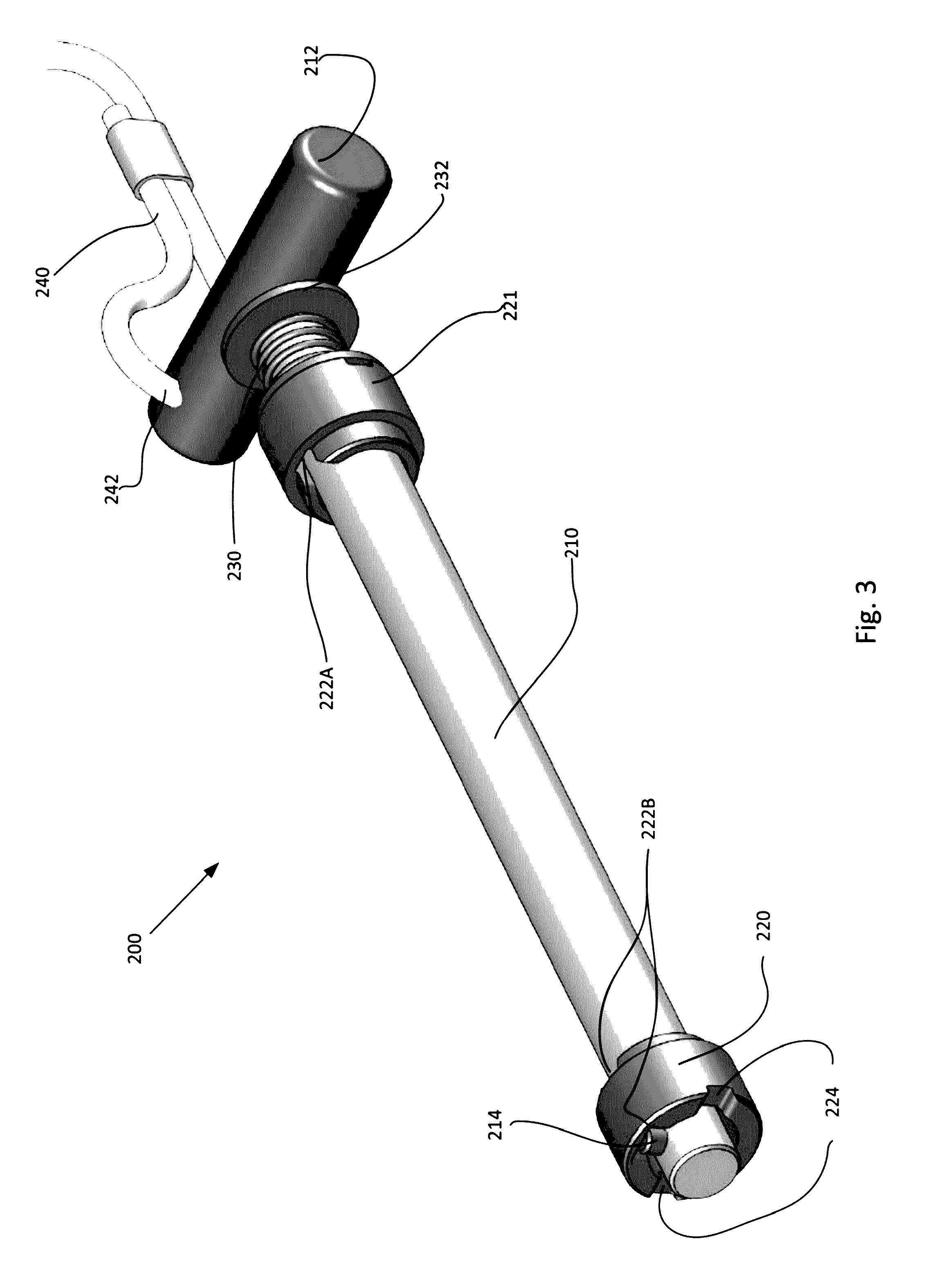Modular securing device for ROV and diver mate-able subsea applications
a technology of securing device and subsea equipment, which is applied in the direction of rod connection, borehole/well accessories, instruments, etc., can solve the problems of insufficient sealing and cleanliness to provide desired reliability, ineffective spring/piston concept for sealing electrical connectors, and inability to meet the requirements of subsea equipment functions and operational requirements, etc., to achieve quick, reliable and low-cost, positive meta-centric height, and neutralizing the buoyancy force
- Summary
- Abstract
- Description
- Claims
- Application Information
AI Technical Summary
Benefits of technology
Problems solved by technology
Method used
Image
Examples
Embodiment Construction
[0047]The present invention and system will now be described in more detail with reference to exemplary embodiments as shown in the accompanying drawings. While the present invention and system is described herein with reference to the exemplary embodiments, it should be understood that the present invention and system is not limited to such exemplary embodiments. Those possessing ordinary skill in the art and having access to the teachings herein will recognize additional implementations, modifications, and embodiments as well as other applications for use of the invention and system, which are fully contemplated herein as within the scope of the present invention and system as disclosed and claimed herein, and with respect to which the present invention and system could be of significant utility.
[0048]Certain embodiments as disclosed herein provide for a modular securing device for ROV and diver mate-able subsea applications in which a single T-handle locking key is attached to th...
PUM
 Login to View More
Login to View More Abstract
Description
Claims
Application Information
 Login to View More
Login to View More - R&D
- Intellectual Property
- Life Sciences
- Materials
- Tech Scout
- Unparalleled Data Quality
- Higher Quality Content
- 60% Fewer Hallucinations
Browse by: Latest US Patents, China's latest patents, Technical Efficacy Thesaurus, Application Domain, Technology Topic, Popular Technical Reports.
© 2025 PatSnap. All rights reserved.Legal|Privacy policy|Modern Slavery Act Transparency Statement|Sitemap|About US| Contact US: help@patsnap.com



